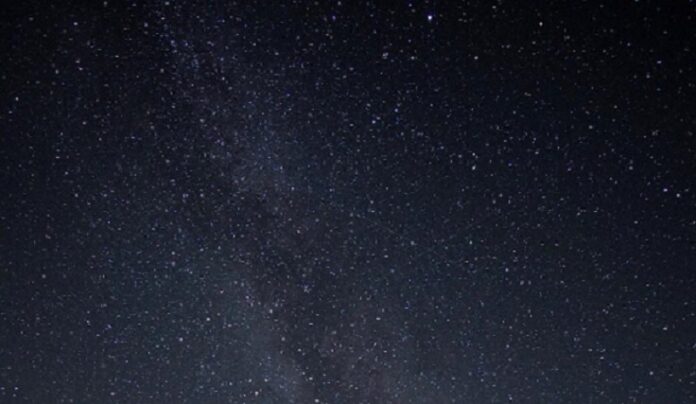Observation of 26 cm radio signals, formed due to hyperfine transition of cosmic hydrogen offer an alternative tool to the study of early విశ్వం. As for neutral epoch of the infant విశ్వం when no light was emitted, 26 cm lines are perhaps only window. However, these redshifted radio signals emitted by cosmic hydrogen in the early విశ్వం are extremely feeble and have been elusive so far. In 2018, EDGE experiment reported detection of 26 cm signals but the findings could not be independently confirmed. The main issue was instrument systematic and contamination with the other signals from the sky. The REACH Experiment is to employ unique methodology to overcome the bottleneck. It is hoped that this research group will reliably be able to detect these elusive signals in near future. If successful, REACH Experiment may bring ‘26 cm radio astronomy’ to the forefront in the study of early విశ్వం and help us much in unravelling the mysteries of early విశ్వం.
When it comes to the study of ప్రారంభ విశ్వం, name of recently launched జేమ్స్ వెబ్ స్పేస్ టెలిస్కోప్ (JWST) pops up in our mind. JWST, a successor of hugely successful హబుల్ telescope, is a space-based, infrared observatory equipped to capture optical/infrared signals from the early stars and galaxies formed in the యూనివర్స్ soon after the Big Bang1. అయితే, JWST has some limitation so far as picking up signals from the neutral epoch of ప్రారంభ విశ్వం సంబంధించినంతవరకు.
Table: Epochs in the history of విశ్వం since the Big Bang

(మూలం: ఫిలాసఫీ ఆఫ్ కాస్మోలజీ – 21 సెం.మీ నేపథ్యం. ఇక్కడ అందుబాటులో ఉంది http://philosophy-of-cosmology.ox.ac.uk/images/21-cm-background.jpg)
Up to 380 k years after the big bang, the విశ్వం was filled with ionised gas and was fully opaque. Between 380k – 400 million years, the విశ్వం had become neutral and transparent. The epoch of reionisation started after this phase starting 400 million after the big bang.
During the neutral epoch of early విశ్వం, ఎప్పుడు అయితే విశ్వం was filled with neutral gases and was transparent, no optical signal was emitted (hence called dark age). Unionized material does not emit light. This poses a challenge in study of early యూనివర్స్ of neutral epoch. However, microwave radiation of 21 cm wavelength (corresponding to 1420 MHz) emitted by the cold, neutral cosmic hydrogen during this epoch as a result of hyperfine transition (from parallel spin to more stable anti-parallel spin) offers opportunities to researchers. This 21 cm microwave radiation would be redshifted upon reaching Earth and will be observed at 200MHz to 10 MHz frequencies as radio waves2,3.
21 సెం.మీ రేడియో ఖగోళశాస్త్రం: Observation of 21-centimeter cosmic hydrogen signals offers an alternative approach to the study of early విశ్వం especially of neutral epoch phase that was devoid of any light emission. This can also inform us about new physics such as distribution of matter over time, dark energy, dark matter, neutrino masses, and inflation2.
However, the 21-cm signals emitted by the cosmic hydrogen during early విశ్వం phase is elusive. It is expected to be extremely weak (about one hundred thousand times weaker than other radio signals also emanating from the sky). As a result, this approach is still in infancy.
2018లో, పరిశోధకులు 78 MHz పౌనఃపున్యం వద్ద అటువంటి రేడియో సిగ్నల్ను గుర్తించినట్లు నివేదించారు, దీని ప్రొఫైల్ ఆదిమ కాస్మిక్ హైడ్రోజన్ ద్వారా విడుదలయ్యే 21-సెంటీమీటర్ సిగ్నల్ కోసం అంచనాలకు చాలా అనుగుణంగా ఉంది.4. కానీ ఈ ఆదిమ 21-సెం.మీ రేడియో సిగ్నల్ని గుర్తించడం స్వతంత్రంగా నిర్ధారించబడలేదు కాబట్టి ప్రయోగం యొక్క విశ్వసనీయత ఇప్పటివరకు స్థాపించబడలేదు. ప్రధాన సమస్య ముందువైపు రేడియో సిగ్నల్స్తో కలుషితం కావడం.
తాజా మైలురాయి 21 జూలై 2022న కాస్మిక్ హైడ్రోజన్ (రీచ్) విశ్లేషణ కోసం రేడియో ప్రయోగం యొక్క నివేదిక. ఈ బలహీనమైన అంతుచిక్కని కాస్మిక్ రేడియో సిగ్నల్లను గుర్తించడానికి రీచ్ నవల ప్రయోగాత్మక విధానాన్ని ఉపయోగిస్తుంది, తద్వారా 21-సెంటీమీటర్ల కాస్మిక్ సిగ్నల్ల నిర్ధారణ కోసం కొత్త ఆశను అందిస్తుంది.
కాస్మిక్ హైడ్రోజన్ విశ్లేషణ కోసం రేడియో ప్రయోగం (రీచ్) అనేది ఆకాశంలో సగటు 21-సెం.మీ ప్రయోగం. డేటాలోని అవశేష క్రమబద్ధమైన సంకేతాలకు సంబంధించిన సాధనాలు ఎదుర్కొనే సమస్యలను నిర్వహించడం ద్వారా పరిశీలనలను మెరుగుపరచడం దీని లక్ష్యం. ఇది బయేసియన్ గణాంకాలను ఉపయోగించి ముందుభాగాలు మరియు కాస్మోలాజికల్ సిగ్నల్తో కలిసి సిస్టమాటిక్స్ను గుర్తించడం మరియు సంయుక్తంగా వివరించడంపై దృష్టి పెడుతుంది. ఈ ప్రయోగంలో రెండు వేర్వేరు యాంటెన్నాలు, అల్ట్రా-వైడ్బ్యాండ్ సిస్టమ్ (రెడ్షిఫ్ట్ పరిధి సుమారు 7.5 నుండి 28 వరకు) మరియు ఇన్-ఫీల్డ్ కొలతల ఆధారంగా రిసీవర్ కాలిబ్రేటర్తో ఏకకాల పరిశీలనలు ఉంటాయి.
This development is significant given its potential to be one of the best tools (and cost effective too vis-a-vis space-based observatories like జేమ్స్ వెబ్) for study of early విశ్వం as well as possibility of ushering in of new fundamental physics.
***
ప్రస్తావనలు:
- ప్రసాద్ యు., 2021. జేమ్స్ వెబ్ స్పేస్ టెలిస్కోప్ (JWST): ఎర్లీ యూనివర్స్ అధ్యయనానికి అంకితం చేయబడిన మొదటి అంతరిక్ష అబ్జర్వేటరీ. శాస్త్రీయ యూరోపియన్. 6 నవంబర్ 2021న పోస్ట్ చేయబడింది. ఇక్కడ అందుబాటులో ఉంది http://scientificeuropean.co.uk/sciences/space/james-webb-space-telescope-jwst-the-first-space-observatory-dedicated-to-the-study-of-early-universe/
- ప్రిచర్డ్ JA మరియు లోబ్ A., 2012. 21వ శతాబ్దంలో 21 సెం.మీ. భౌతికశాస్త్రంలో పురోగతిపై నివేదికలు 75 086901. ఇక్కడ అందుబాటులో ఉన్నాయి https://iopscience.iop.org/article/10.1088/0034-4885/75/8/086901. arXiv వద్ద ప్రిప్రింట్ అందుబాటులో ఉంది https://arxiv.org/abs/1109.6012 pdf వెర్షన్ https://arxiv.org/pdf/1109.6012.pdf
- ఆక్స్ఫర్డ్ విశ్వవిద్యాలయం. కాస్మోలజీ యొక్క తత్వశాస్త్రం - 21 సెం.మీ నేపథ్యం. వద్ద అందుబాటులో ఉంది http://philosophy-of-cosmology.ox.ac.uk/21cm-background.html
- బౌమాన్, J., రోజర్స్, A., మోన్సాల్వే, R. మరియు ఇతరులు. స్కై-సగటు స్పెక్ట్రంలో 78 మెగాహెర్ట్జ్ వద్ద కేంద్రీకృతమై ఉన్న శోషణ ప్రొఫైల్. ప్రకృతి 555, 67–70 (2018). https://doi.org/10.1038/nature25792
- డి లెరా అసిడో, ఇ., డి విలియర్స్, డిఐఎల్, రజావి-గోడ్స్, ఎన్. మరియు ఇతరులు. రెడ్షిఫ్ట్ z ≈ 21–7.5 నుండి 28-సెం.మీ హైడ్రోజన్ సిగ్నల్ను గుర్తించడానికి రీచ్ రేడియోమీటర్. నాట్ ఆస్ట్రాన్ (2022). https://doi.org/10.1038/s41550-022-01709-9
- ఎలోయ్ డి లెరా అసిడో 2022. రీచ్ రేడియోమీటర్తో శిశు విశ్వం యొక్క రహస్యాలను ఆవిష్కరిస్తోంది. ఆన్లైన్లో అందుబాటులో ఉంది https://astronomycommunity.nature.com/posts/u
***






































